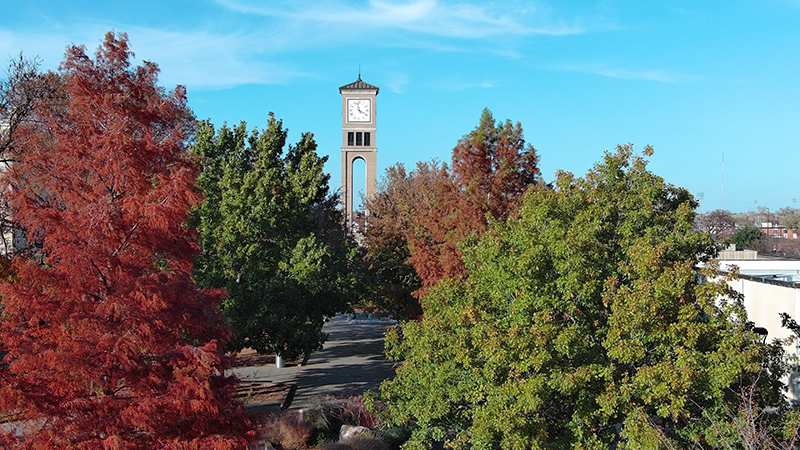
Tenth and final in a series on rural universities.
According to New Directions for Higher Education, rural universities face unique challenges and opportunities. In 2025, several trends will shape the landscape of colleges and universities in rural areas, and WT will be responsive in every aspect.
Rural regions of the United States make significant contributions to the nation’s economic well-being. Rural America is the backbone of U.S. agriculture. In 2023, the agriculture, food and related industries contributed approximately $1.53 trillion to the U.S. gross domestic product (GDP), accounting for 5.6% of the total GDP. Agriculture contributes over 9% of the total state GDP in Texas, a significant portion of which occurs in the Texas Panhandle, according to Texas AgriLife Extension. The direct output from all of America’s farms was $203.5 billion, which means Texas represents about 0.7% of the national farm GDP. According to Texas Department of Agriculture data, the 230,662 Texas farms and ranches are more than any other state in the nation and cover 125.5 million acres. The U.S. is one of the world’s largest agricultural producers. Nationally, one in ten U.S. workers is engaged in agriculture-related work. As WT serves our region, these realities are at the top of my mind.
Many states in our nation, particularly those with strong natural resources and agricultural economies like Texas, face a “two-state challenge” with two fundamentally different populations to serve. Pew says the challenge exists because of the unique characteristics of rural regions in states dominated by major metropolitan areas. Such states’ political, economic and social dynamics often lead to disparities in resource allocation, representation and development opportunities for rural areas.
Universities often partner with high schools to enhance educational opportunities, bridge gaps between secondary and higher education and prepare students for future academic challenges. Such partnerships are important in rural high schools that are “off the beaten path,” like many of the high schools in West Texas and especially the top 46 counties. The majority of 1A or 2A high schools average 65 to 180 students, respectively, according to the University Interscholastic League, accounting for about 20% of Texas schools. Universities claiming to serve rural communities must be engaged with these high schools because the students deserve a chance to be optimistic about their future regarding higher education if that is a path they choose to pursue.
A common misconception of universities like WT is that a rural, regional focus limits opportunity and intellectual inquisitiveness rather than defining a university’s purpose. WT’s long-range plan, WT 125: From the Panhandle to the World, specifically addresses the Panhandle as a living laboratory for production and family agriculture, impacting every aspect of WT’s engagement in community life: from healthcare delivery, business entrepreneurship, water and engineering technology, fed beef and cow-calf operations, small rural school districts, as well as an understanding of and appreciation for the culture and human experience of rural agricultural regions. Such clear, sharp and inexorable focus can help develop sustainable rural life and business practices while engaging in global networks for technology transfer and knowledge sharing.
University Business reports that flexible learning models in universities are evolving to accommodate student needs, work-life balance and technological advancements. These models are transforming higher education to be more accessible and innovative. While many variations appeal to students in any location, these can be especially important to students and institutions serving dispersed populations in rural areas.
Uninformed observers may believe lower costs lead to lower quality. The Veblen Effect, named after economist Thorstein Veblen, postulates that higher costs drive higher demand, and by magic, quality follows. The idea has cancerously infected higher education. Prestige may follow, but quality is not guaranteed. Careful analysis yields different conclusions. Exploring Economic Returns Across Rural-Serving Colleges reports, “…rural-serving institutions are primed to provide accessible and affordable degrees for their populations in an efficient timespan of within six years for a bachelor’s degree…” Furthermore, the average time to a degree in rural serving institutions, as opposed to metropolitan institutions, is shorter.
The Economist reports that birth rates in the United States and developed nations worldwide are dropping like a rock. Forbes claims college readiness in the United States is on the wane. Too many universities think the answer to an enrollment decline is to behave like flagships or elite private institutions. Institutional resistance to change is deeply embedded, according to Inside Higher Ed. The opportunity to serve local audiences first who would otherwise be denied access to an excellent learning experience is sacrificed on the altar of internationalism rather than the responsive powerhouse of regionalism. As name-brand public and private universities work harder to grow their enrollment, many smaller public and private rural institutions struggle to make payroll: the tip of an iceberg.
Excellent rural universities will sustain themselves in the future as they serve the region in which they are located. A Regional Research University will serve locally first and, in so doing, will serve the world. From here to the world is the WT way.
Walter V. Wendler, President of West Texas A&M University. His weekly columns, with hyperlinks, are available at https://walterwendler.com/.






